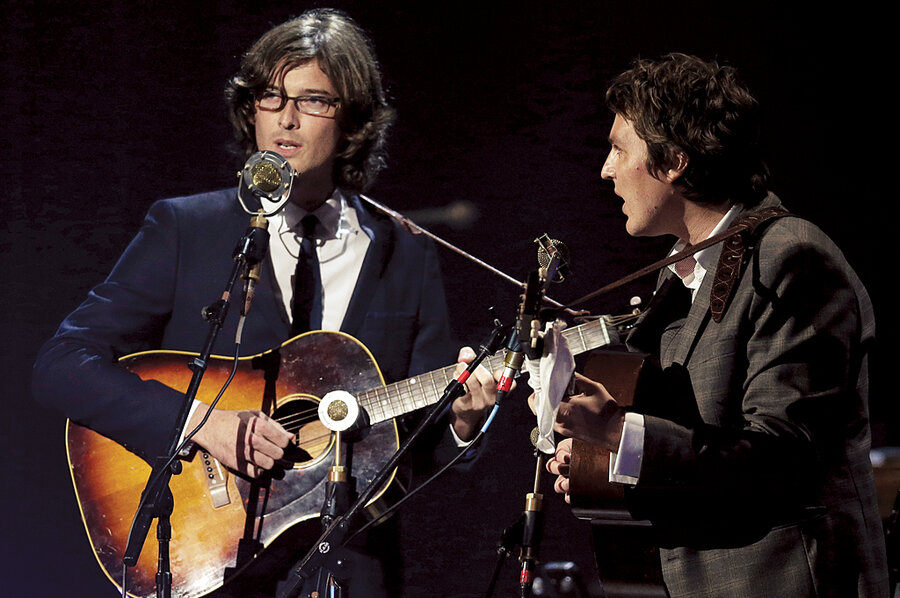Harmony. It's good for you.
Loading...
Once when we were kids, my dad dragged us to a barbershop-quartet competition. He wasn’t a contestant, just a major enthusiast. There is nothing cornier in this world than barbershop quartets. The old-timey hats, red vests, and plaid pants, the wince-inducing names – I mean, come on. Yet after our first exposure to the art of harmony singing, we could not wait to go back. Those deftly interwoven voices, that thrilling precision, the pure joy and glorious sound emanating from the stage. We couldn’t get enough.
Barbershop quartets may have lost favor over the years, but harmony singing is more popular than ever. It could be an antidote for the grim times we live in, or simply recycling styles of past decades. Whatever spurred the resurgence – welcome back!
Stacy Horn, author of “Imperfect Harmony: Finding Happiness Singing with Others,” chronicles the regenerative power of harmony singing. After suffering a series of personal setbacks she began singing with a chorus. Soon “I was ... vibrating with a wondrous musical rapport I’d never felt before. I was completely in the power of the sound we were making together.... And I could return to the euphoria week after week after week,” she writes.
Fact is, it would be hard to find a person who wouldn’t drop whatever they’re doing to harmonize on “With a Little Help from My Friends,” or “Stop in the Name of Love,” anytime it wafts from a speaker. It’s always been that way. World War II soldiers in USO canteens left their troubles behind to belt out “Boogie Woogie Bugle Boy from Company B” with The Andrews Sisters; country fans wept as they harmonized to The Louvin Brothers in the 1950s or the Everly Brothers’ “Let It Be Me” in the ’60s. Groups such as The Beatles, The Beach Boys, The Stylistics, and Bee Gees put harmony front and center on the pop charts, leading the way for Crosby, Stills & Nash; the Eagles; Fleetwood Mac; and ABBA to take up the mantle.
Then it stopped. Disco, punk, then hip-hop took over and harmony became uncool, an artifact of your parents’ music. Lead singers dominated the stage. But not for long. Harmony roared back like a mighty wind. Fleet Foxes, Nickel Creek, Gillian Welch, and the Old Crow Medicine Show launched the comeback a decade ago. Today, Dawes, The Avett Brothers, and Mumford & Sons feature warm, brotherly harmonizing. Swedish sisters First Aid Kit are irresistible. Newcomers The Milk Carton Kids sound like musical offspring of The Everly Brothers and Simon & Garfunkel. And duos such as The Head and the Heart and The Civil Wars beguile with their tantalizing vocal blend.
And that’s just the crest of the wave. Harmony has returned. Long may it reign.





